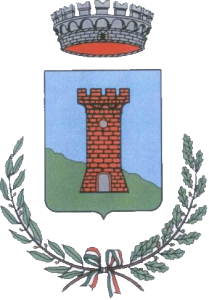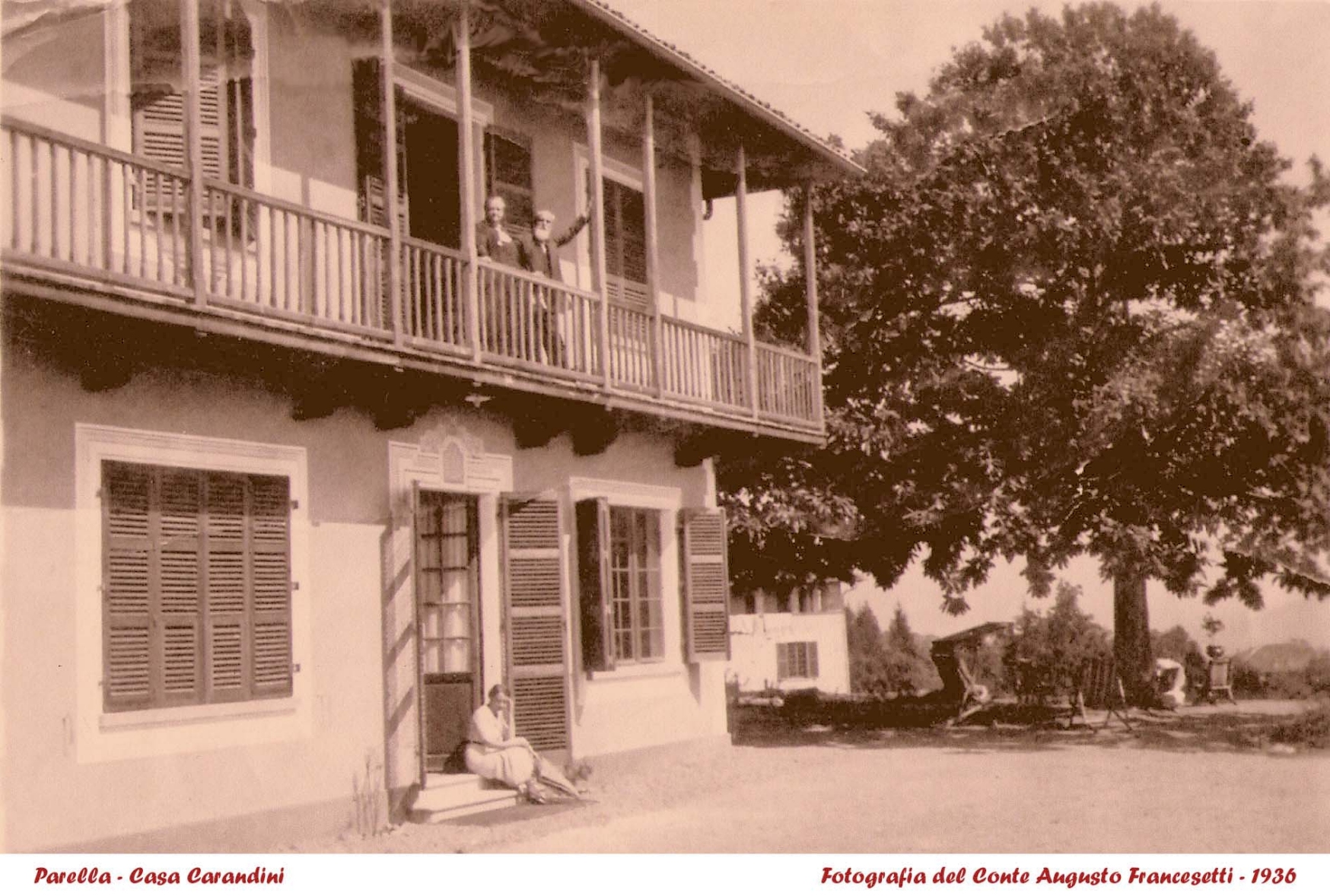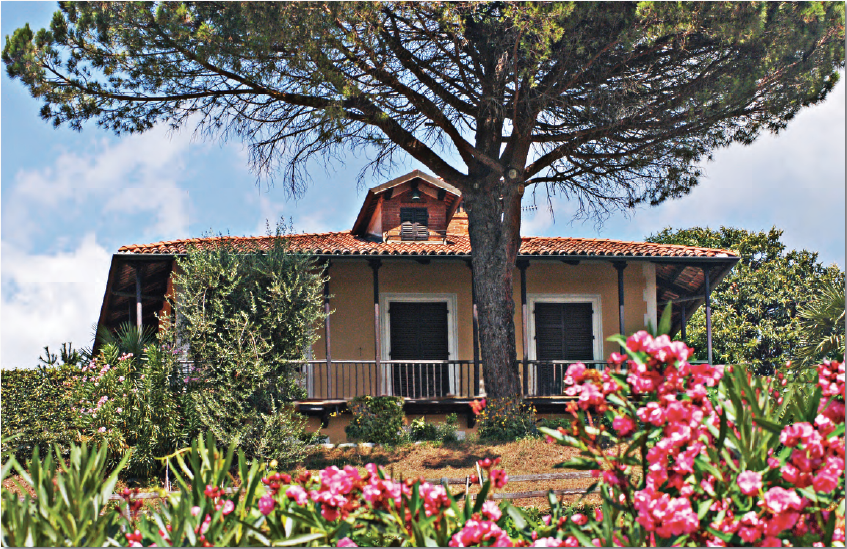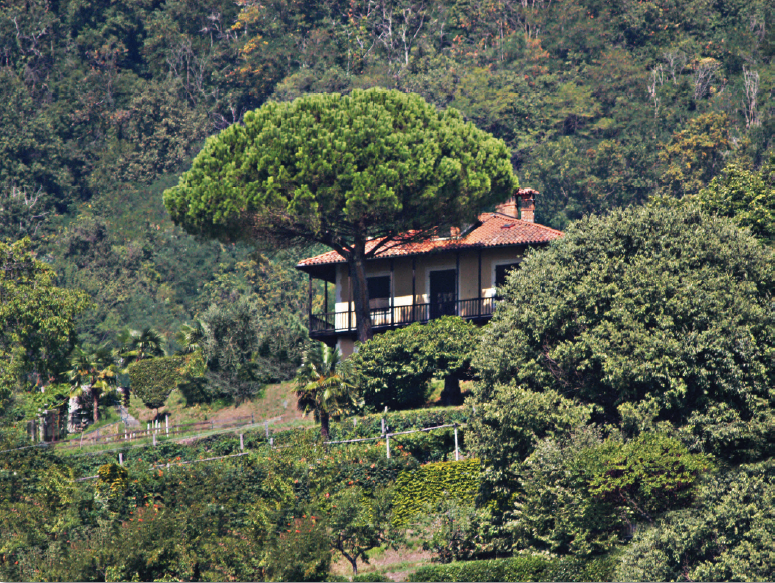La famiglia Carandini
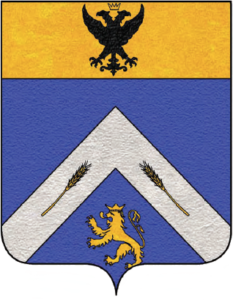
The memoirs about the Carandini family date back to the middle of the 12th century when it was called with the original name De’ Risi, represented by the two ears of rice on the coat of arms. The two family names – De’ Risi and Carandini – coexisted and alternated at the beginning of the 15th century; afterwards the present family name prevailed.
The Carandinis have been aristocrats from Mdena and noblemen from Bologna since the 15th century, besides being Palatine Counts of the Estense Dukedom. They were mainly soldiers linked to an Italian Princely state second only to the Savoy Dukedom. Among their ancestors the Carandinis list soldiers, diplomats, jurists, literates and important clergymen like Cardinal Ercole Consalvi, Pio VII’s State Secretary.
Cardinal Consalvi entrusted Antonio Canova to bring back to Italy the works of art purloined by Napoleon Bonaparte.
was born at Colleretto Parella, in Villa Giacosa, on 3rd November, 1858. His father was Marquis Federico (1816-77), soldier, professor at the Ivrea Infantry School and writer; his mother was Elisa Realis, Paola’s sister, whose sons were Giuseppe Giacosa, famous playwright and author, and Piero Giacosa, eminent scientist and historian. After studying at Liceo Classico in Ivrea, Francesco Carandini graduated at the Royal Law University, Turin, and then started his career as a Prefect in Perugia (1887). Then he was secretary at various Prefectures (Pinerolo, Turin, Parma, Crema, Biella), Vice-Prefect in Rome during the First World War, then Prefect in Forlì, Verona and Udine. In 1922, he was given the title of 11th Marquis of Sarzano, patrician of Modena and nobleman of Bologna. On the evening of October 27th, 1922, Prefect Carandini received news of the Fascist mobilization and of the arrival of the squads led by Achille Starace, future secretary of the National Fascist Party.
So, a plan to defend public buildings was devised in agreement with the military authorities. On the morning of October 28th, the Fascists attacked the Prefecture and the Police Headquarters, and ordered the Prefect to leave his post. The Commander of the Army Corps took power.
When the King refused to sign the decree of the state of emergency, the Fascists became de facto the winners.
Carandini was transferred to Udine, then placed at disposal and eventually he retired “as his liberal leanings could not agree with the assertion of Fascism”.
During his career he was appointed Grand’Ufficiale dell’Ordine della Corona d’Italia (Grand Officer of the Order of the Italian Crown) and Commendatore dell’Ordine Mauriziano (Knight Commander of the Mauriziano Order).
Francesco Carandini married Amalia Callery Cigna Santi from Turin. They had three children: Federico Cesare (1888-1950), who married Clara Albertini, Senator Luigi Albertini’s sister; Elisa (1890- ?), who lived in the villa till her death; and Nicolò (1895-1972), who married Elena Albertini, the daughter of Senator Luigi Albertini and Piera Giacosa. Once retired, Francesco Carandini devoted his time to poetry and historical studies and, having become more and more fond of Parella, he had his long-dreamed of “villa on the hillock” built (1932-35)
The house, located in Via Loranzè, 9, is a simple two-storey block built in the typical local style, with a wooden gallery protected by the roof overhang, used both to connect the rooms and as a panoramic sight-point. The gallery runs along the sunniest sides and is fixed to the roof overhang with vertical bars that remind of the ancient “lobbia” (gallery) once used to dry harvests and to store firewood.
The villa is surrounded by a large attractive park with secular trees, exotic essences and vineyards.
Francesco Carandini died in his house on October 23rd, 1946 and was buried in the local graveyard. The epigraph on his grave says “He spent his long life serving the state and dedicating his genial studies to history and art. Here he rests satisfied with his faithfulness to truth, right and goodness”.
A history and literature scholar, Carandini published various monographs, poems, commemorative speeches, and essays about Alfredo D’Andrade’s works and was his first biographer.
Among his about sixty works, “Vecchia Ivrea” (Old Ivrea), published in 1914 and re-printed until 1963, is remarkable. It is a precious source of news, facts, historical events about Eporedia. His collection of poems “Memorie Canavesane” (Canavesan Memoirs), 1963, also shows his talent as a poet.
